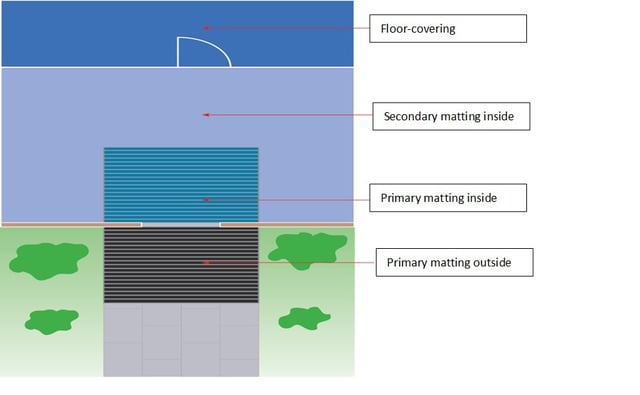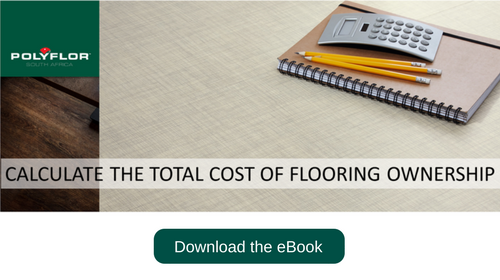Entrance matting: 5 critical questions and a calculator to determine whether entrance matting is a worthwhile investment for your building.
.jpg?width=640&name=Gradus%20Barrier%20Matting%20(2).jpg)
Q1. Should our building use entrance matting?
While often forgotten, or left until last in a build specification, the importance of entrance matting cannot be underestimated. Using a co-ordinated barrier matting system can reduce tracked-in dirt and moisture by 90%.
The correct implementation and care of entrance matting serves three important functions:
- Reduced slip-risk.
- Protection of the floor-covering ensuring a longer floor life.
- Reduced cleaning and maintenance costs.
Q2. How should entrance matting be specified?
Important considerations during the design-phase of a building are:
- How many people are likely to pass through your building daily?
- What type of dirt could be tracked into your building (external factors)?
The answers to these questions assist in decision-making about what entrance matting to use and where to use it.
A typical entrance matting installation layout is shown below:

Some building designers are now ensuring that entrance matting is used in revolving doors that are specified as the only regular entrance into a building. The revolving doors are designed to ensure at least eight steps on the barrier matting. Matted revolving doors are a cost-effective way of ensuring good use of entrance matting.
Additional important considerations when designing and specifying Entrance Matting
- Mats can be dropped into a mat-well, or be surface-mounted with ramps to ensure they are not a trip hazard.
- A combination of mat-types and colours can be an attractive feature at an entrance.
- Matting should be used at all entrances and in any areas where the transfer of moisture or other dirt may occur, for example, between the factory floor and offices.
- The entire entrance, including side entrances, should be covered.
- Traffic should not be able to avoid the entrance matting and it should cover at least six footfalls.
- Pedestrians may favour certain entrances, e.g. those close to toilets, canteen areas or automatic doors, so they require more matting.
- Use a higher proportion of secondary matting to keep costs down.
- Maintenance and cleaning of the matting system are vital for their continued effectiveness.
Q3. What is the difference between primary and secondary entrance matting?
Entrance matting is classified as primary or secondary, and a co-ordinated combination of both should be used.
Primary barrier matting:
- This is your first point-of-contact when you enter a building, and the first opportunity to remove dirt and moisture.
- It should be used to cover large sections both inside and outside the building entrance/s.
- It removes dirt and moisture: nylon scrapers remove heavy soiling and moisture from shoes and wheels. The more heavy-duty the requirements, the higher the density of nylon scrapers required in the matting.
Secondary barrier matting:
- Serves as a secondary walk-off zone for dirt and moisture, but its main function is moisture removal. It is constructed of strong solution-dyed nylon fibres which have excellent moisture retention properties and is hard-wearing and easy to clean.
- It can be used as part of the design scheme to create curves and walkways and cover large areas.
- It is heavy-duty and multifunctional and can be used as a traditional carpet on stairs, corridors, in offices, and in classrooms.
- It is easy to install and requires no mat-well.
Q4. What are the maintenance requirements for entrance matting?
A typical effective maintenance regime for entrance matting includes a daily dry-vacuum (2-3 passes per sqm with the correct equipment) and a monthly SABS deep corrective clean for both primary and secondary matting.
Q5. Is the cost of installing entrance matting and cleaning it worth it for our building?
The answer to this is dependent on your building and its traffic. Use our calculator to determine any cost saving or return on investment that entrance matting may provide in your building.

Cost of dirt removal is adapted from 3M Dirt calculator: http://solutions.3m.com/wps/portal/3M/en_EU/FacilitiesCleaningEU/FacilitiesCleaningCare/Resources/DirtCalculator/
To continue to understand hidden costs and the total cost of floor ownership, download this eBook from Polyflor which illustrates the lifetime costs of floor ownership.

For more insights like these sign up for Polyflor Insights and we will send useful tips and advice straight to your inbox.
